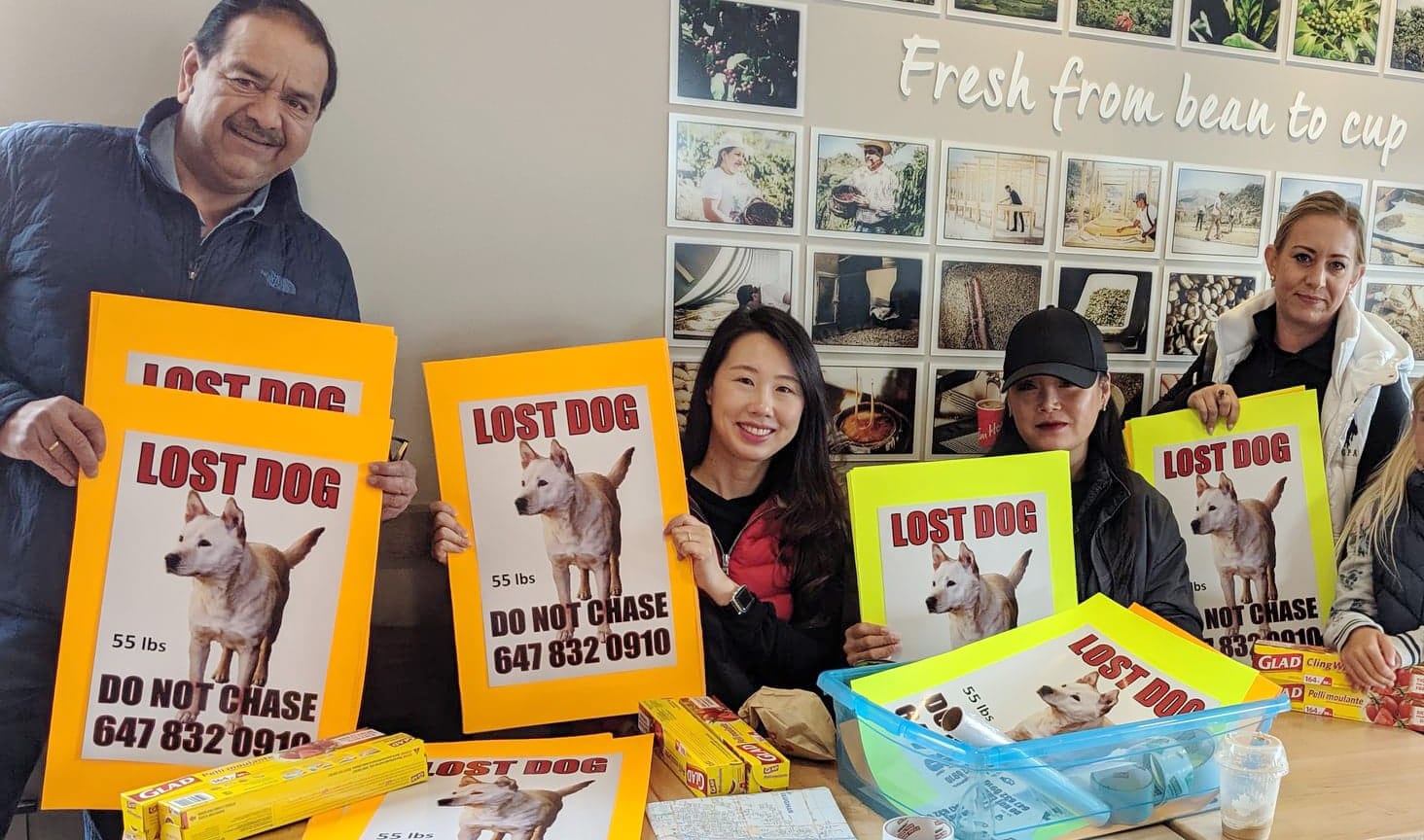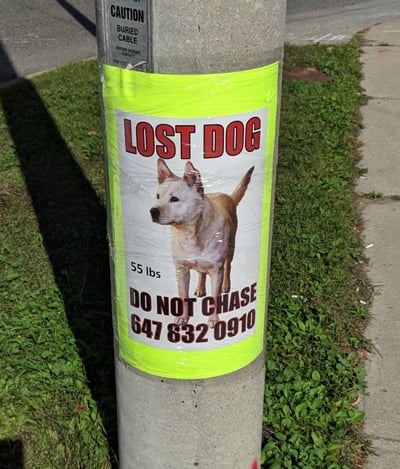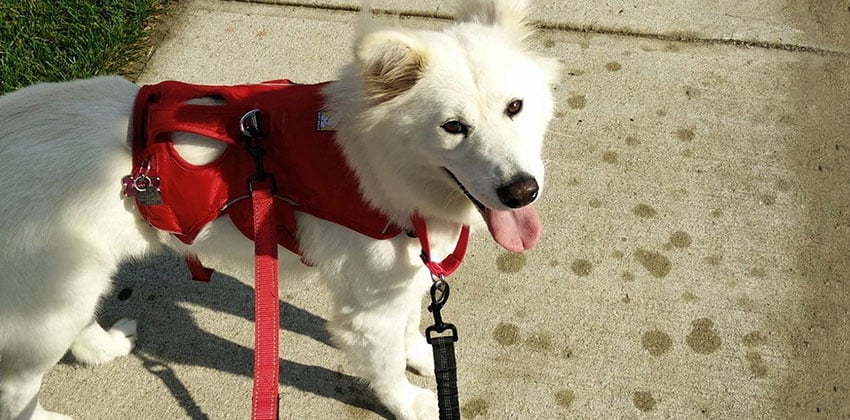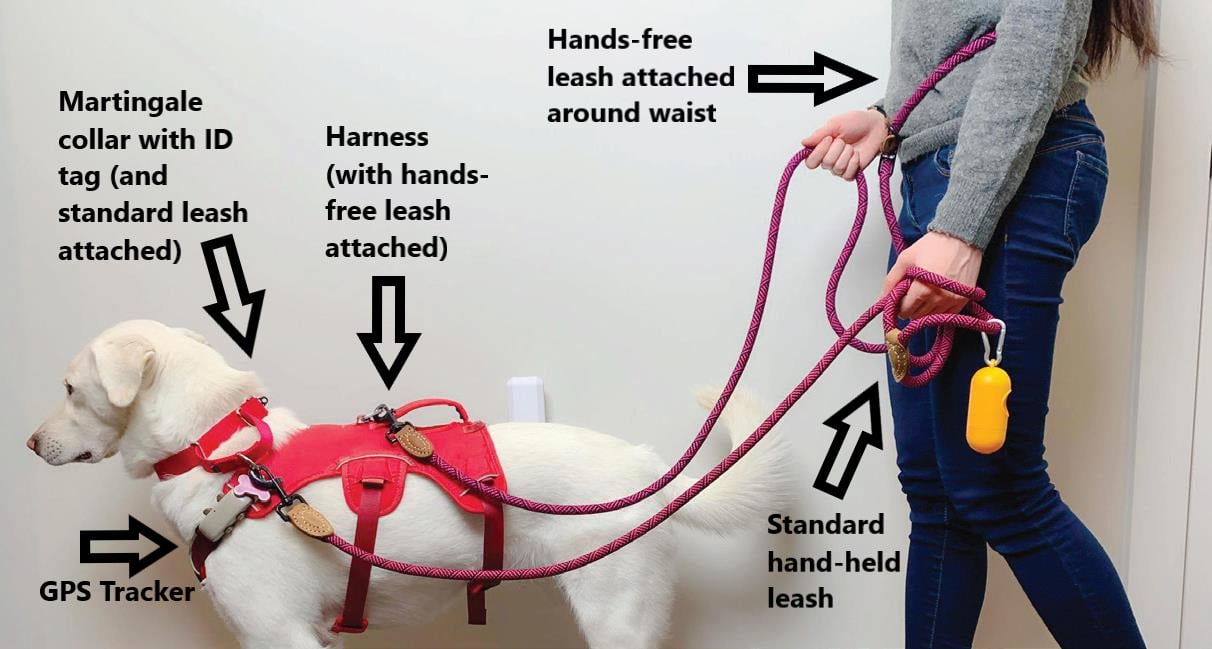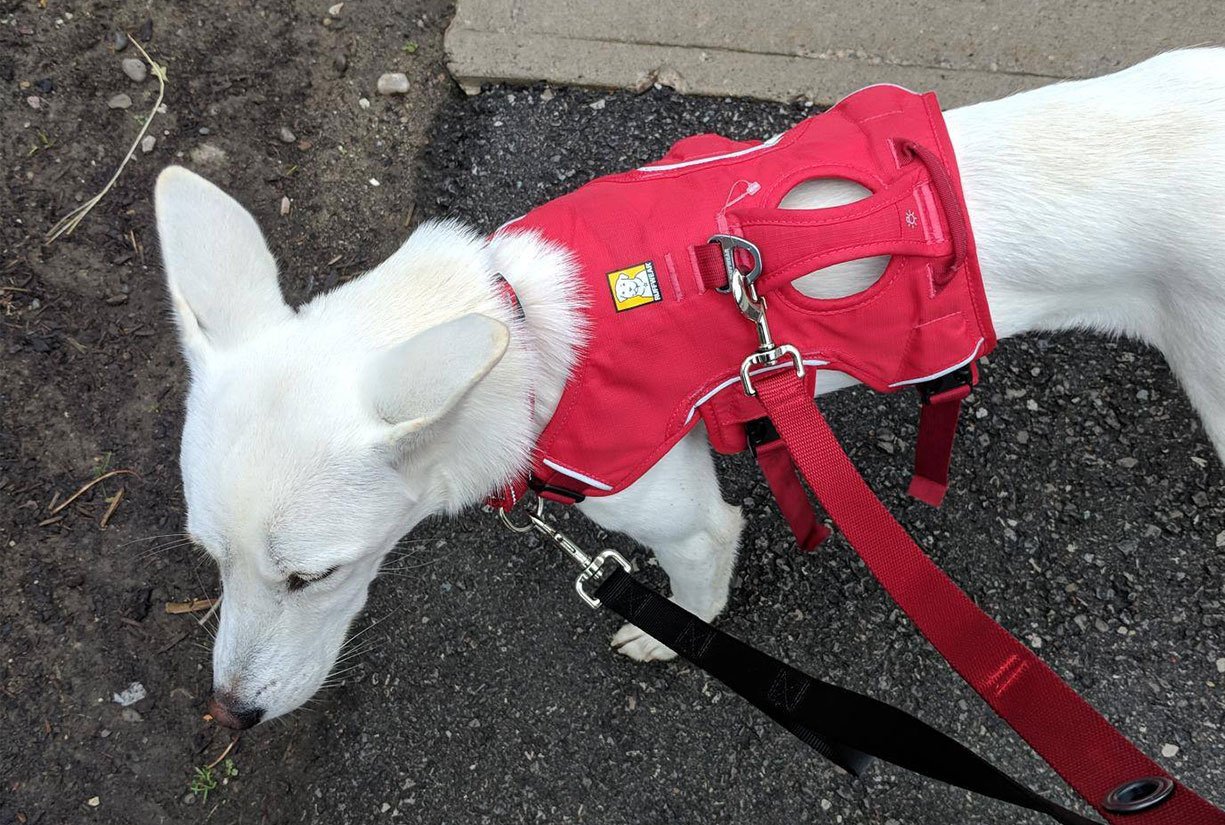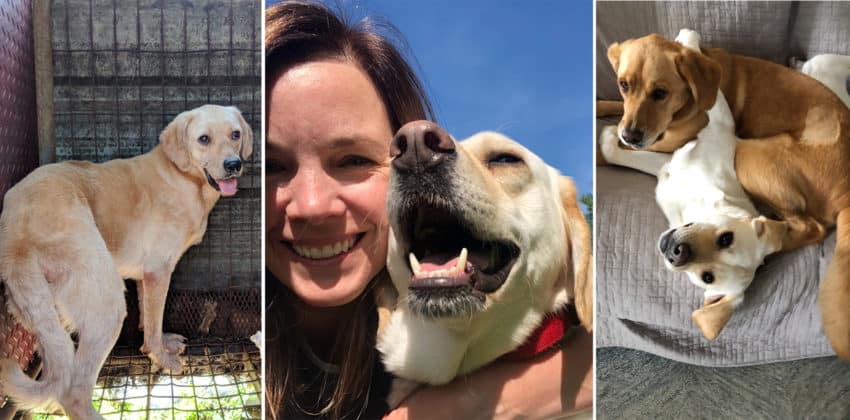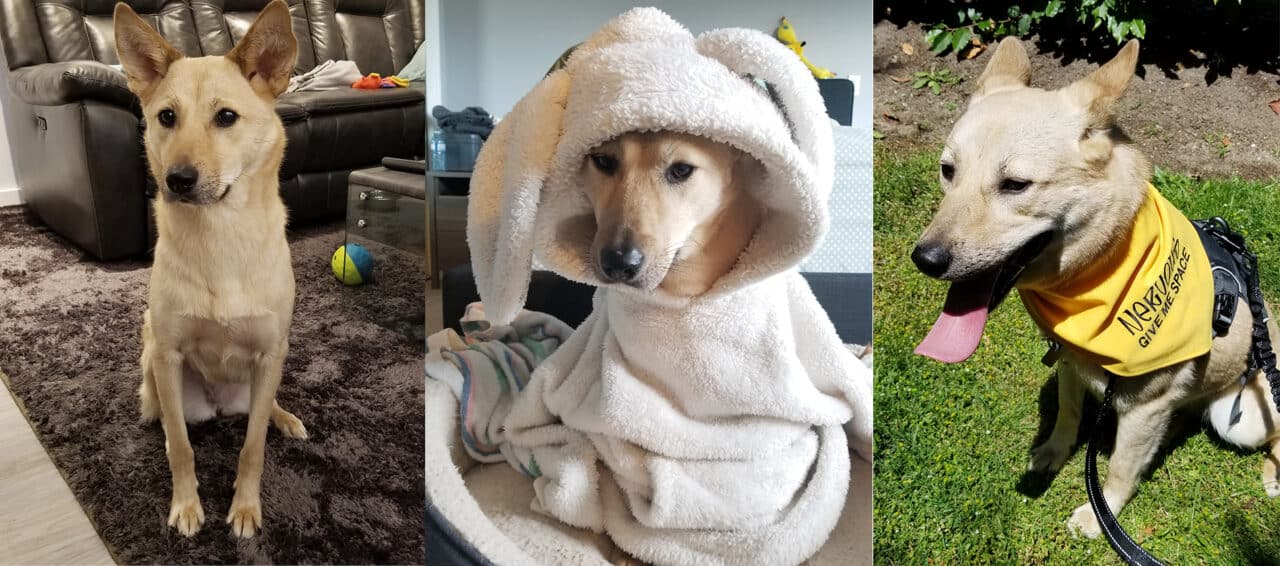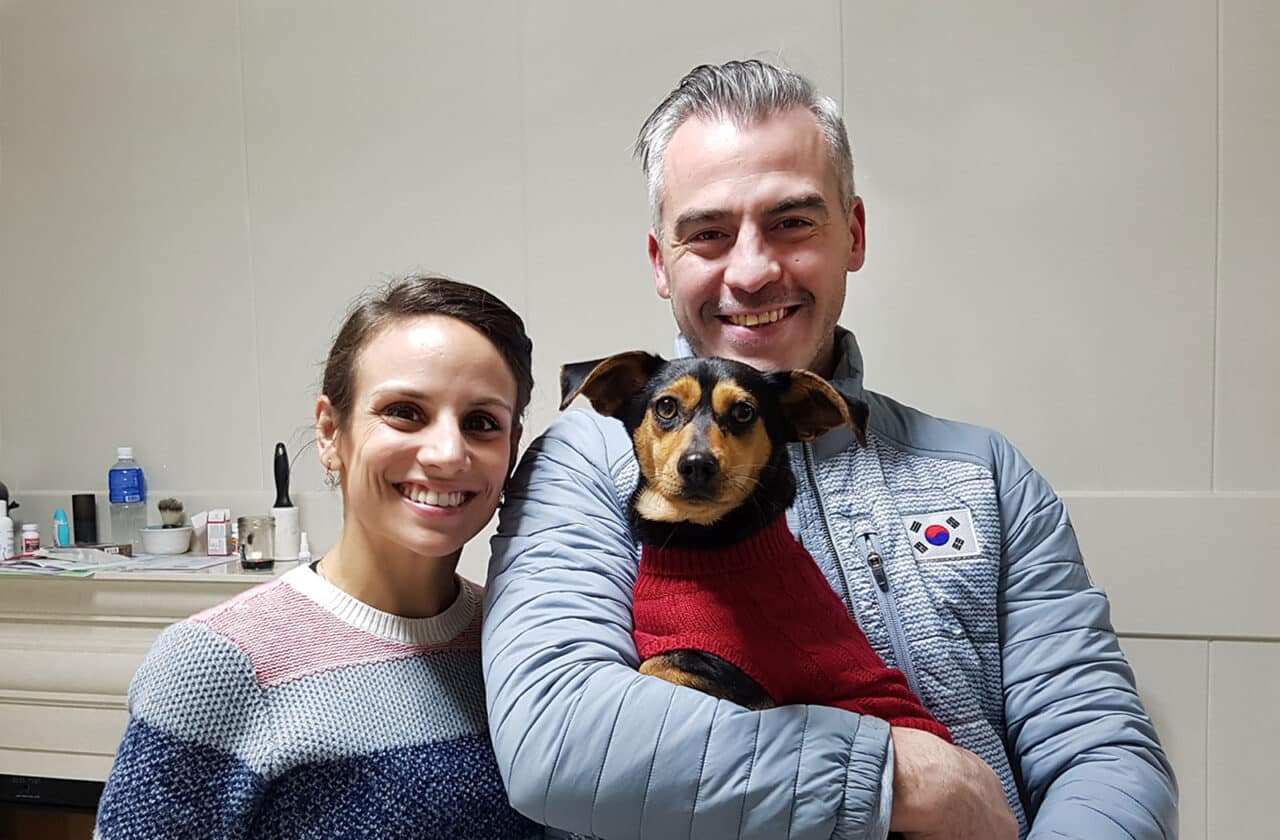Safety and Loss Prevention
Did you know that 70% of FKD dogs who have gone missing or run away have done so under the care of someone other than their family? The remaining 30% were a result of not having the proper safety measures in place.
Dogs can back out of collars, contort out of harnesses, and take off running on a whim causing you to lose your grip on the leash. Everyone who ever lost a dog probably thought it would never happen to them until it did. Losing a furry family member is a very scary experience, and not all are recovered. With the rise of pet theft cases and the coyote population in urban areas, the unthinkable is always a possibility. Save both your dog and yourself the stress of going missing by being proactive.
Pre-trip Preparations
- Ensure ID tag information is visible and up to date. Information on the tag can include the dog’s name, your phone number, a secondary phone number (such as a family member or vet), a microchip number, a microchip company, and/or address. The information on the tag should be visible and easy to read. Engraved and printed fonts can fade over time.
- Ensure the microchip is registered and information is up to date. (Note: A microchip is NOT a GPS tracker! It is a permanent electronic form of ID that is implanted at the back of a dog’s neck, in between the shoulder blades. This small, rice grain-sized chip contains a unique registration number within a database registry and provides details about the animal and its owner when scanned. When a dog is lost, it is a common practice by animal control and shelters to check for a chip. If your dog is found by a community resident, they can also have the pet scanned at a vet free of charge). Chips can migrate to other areas of the dog’s body over time, so it is important to check their placement at annual vet visits.
- Although your pup may be well-adjusted with you, taking direction from another “leader” may be a slower process. Take the time to meet with and build your dog’s relationship with the potential caregiver before your scheduled trip. This is especially important if your dog takes time to warm up to new people and requires slow introductions.
Safety in the Care of Others
- Ensure everyone is well informed of all safety needs. Does the sound of a leaf blower scare your dog? Is your dog nervous in busy areas? Not too fond of other dogs on leash? These are all things your caregiver should be aware of, so they can make adjustments to the environment to be as stress-free as possible.
- Harness? Check. ID tag? Check. Handsfree leash? Check. It may sound excessive, but better safe than sorry! Don’t trust their cute faces. We’ve seen it all – 40lb dogs squeezing through a 6-inch space, dashing off at an opportune time when owners are distracted, or wiggling out of a supposed “escape-proof” harness. Dogs can give Houdini a run for his money!
- After much experience searching for the best harness, “the 5-point harness” as used in the “Ruffwear Webmaster” designs has been the most effective at keeping our dogs secure. It is by no means “escape proof”, but we consider it the best option.
- The hands-free leash is worry-free. When your dog is securely attached to your waist you have an extra measure of security and peace of mind you won’t lose hold of the leash when picking up poop or similar situations. Using the 2 leash system also helps counter the weight of pullers and offers more control for those who are not leashed trained and walk in zig zags.
Safety in the Home (with You and with Others!)
- Install baby gates and barriers near main doorways. It only takes a second for a dog to dash out! There are many “no screw” options that don’t require you to drill holes into the wall. This is an especially good option for sitters, as you have peace of mind and they don’t have to make drastic changes to their home. Playpens are also great options for smaller breeds.
- (If there is a fenced backyard) Check the fence for weak points, loose boards, faulty gate latches, and areas dogs have dug and can potentially crawl under.
- If your trip lands on a holiday or weekend where community festivities are happening, be sure to make note of when and where fireworks are happening. In the US, more pets get lost during the 4th of July than any other time of the year. Adjust walks and potty break times accordingly.
Experiencing a missing dog and a very scary and heartbreaking incident. The unfortunate fact is some dogs are never recovered, and owners spend a lifetime without closure. Keep your pets safe by being proactive. Safety never takes a holiday!
Subscribe for Updates
Get our dogs in your inbox once a month, along with our latest news and events. We never send spam, and you can opt out at any time.
